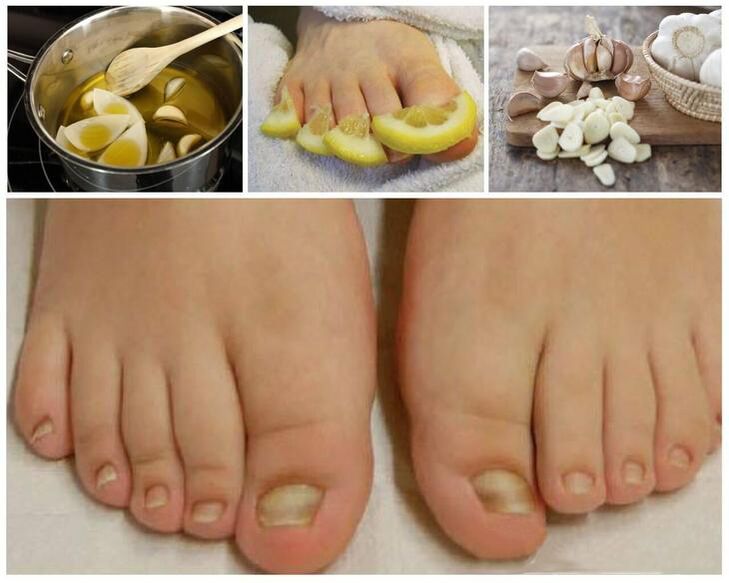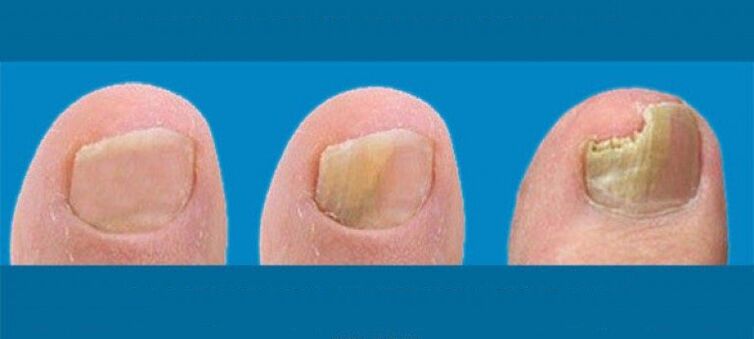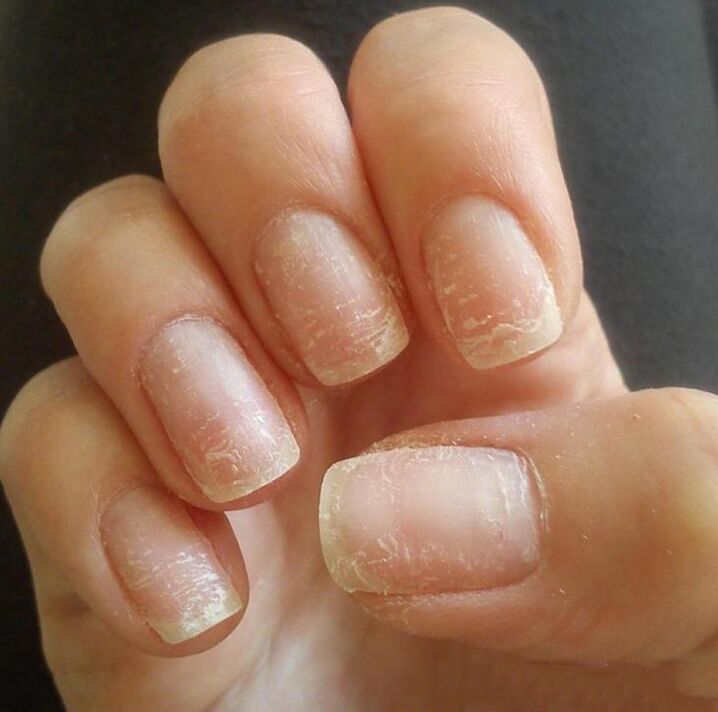
A fungal infection can affect every part of the body.Like other bacteria and microorganisms, mushrooms are always in the human body and in his skin in strict balance.If the number of fungi increases for various reasons, an infection can begin.
Onychomycosis, also called mushroom -onichia, is a fungal infection that affects the nails either on the legs or on the hands.It develops slowly, so it is very difficult to notice signs of the disease at first.
Why does it develop?
The mushroom infection of the nails begins from the moment the number of mushrooms inside, under or on the nails increases sharply.Mushrooms love a warm and moist surroundings so that they multiply intensively in a suitable environment.The nail fungus occurs due to the same mushrooms that cause bordered eczema, mycosis and cutting of braids.
Mushrooms that live calmly and in the body can cause nail infections.If you are in contact with someone who has this disease, it can be transferred to you.According to the American Academy of Dermatology, fungal infections often affect the legs on the legs than on the arms, since the fingers are more often in a warm and damp environment.
If you are used to producing manicure and pedicure in the cabin, it is worth finding out how the staff disinfects the tools and how often he does.Farewell to manicure and pedicure such as nail files and nails can be a source of infection that will definitely be transferred to another person without proper disinfection.
Who can be infected?
There are many causes of a fungal infection of nails, and each of them is treated in their own way.Most of these reasons can of course be prevented, but there are some factors that significantly increase the risk of this infection.The highest risk of developing nail fungus are people who:
- They are sick with diabetes;
- have a disease that weakens the blood circulation;
- over 65 years old;
- have overhead nails;
- Visit public baths, pools;
- Have nail injury;
- are injured in the skin around the nails;
- The legs are constantly in moisture or sweat;
- have a weak immune system;
- You wear narrow and cramped shoes such as tennis shoes and boots.
A fungal infection is more common in men than in women and more often in older people than in children.If someone in your family is sick with a mushroom, you will most likely have it in the future.Older people have the greatest risk of developing this infection because blood circulation deteriorates with age and the nails slow down and become thicker.
What does the nail funga look like?
A fungal infection can affect part of the nail, the entire nail or more nails at the same time.
Visible signs

Explicit symptoms of nail fungus are:
- Nail layering, which is referred to as Purebal hyperkeratosis;
- White or yellow stripes on the nail, which are referred to as lateral onychomycosis;
- crumbling ends of nails or corners, which are referred to as distal onychomycosis;
- Excessive white spots on the nails, whereupon holes remain;
- the appearance of yellow spots near the nail hole, which is called proximal onychomycosis;
- Loss of nail.
General signs
The frequent symptoms of a fungal infection are considered:
- Deformation of the nail plate, the nail does not hold well in its place;
- an unpleasant smell from an infected nail;
- crumbling or thickened nail.
How do I find out if I have a nail fungus?
The only way to confirm the diagnosis is to consult a doctor, since some other infections also influence the nails and have symptoms that are similar to the fungus.In such cases, a scratch is usually removed from the nail, which is sent to the laboratory for a detailed analysis and clarification of the diagnosis.
When is the time to see a doctor?

In most cases, nail fungus is seen as a purely cosmetic problem.In some people, however, a fungal infection can cause serious complications.In people with diabetes, the nail fungus can continue to lead to the ulcers of the foot or other problems with their legs.According to the 2012 study, a chronic nail fungus on the legs is one of the main risk factors and a key disease for the development of bacterial cellulite of the legs.
If you have diabetes or a weakened immune system, you should not use home remedies to treat nail fungus.Contact the doctor to get help to find out how to treat the mushroom on your legs and how to be treated.
How do you heal nail fungus on your feet?
Over complex drugs are usually not recommended for the treatment of mushroom nail infections because they do not provide reliable results.Instead, your doctor prescribes oral antifungals.These drugs are very effective, but have many side effects of gastric diseases and dizziness compared to skin and jaundice problems.
You can use other antifungals such as antifungal or nail base.It is applied to the nail as well as the normal nail polish.Depending on the type of fungus and the degree of damage to the nail plate, this tool may have to be used for several months.
Unfortunately, the treatment does not completely guarantee that the fungal infection starts quickly.In almost half of the cases, the nail fungus returns again.Complications are not excluded.Perhaps many people are therefore more of the help of traditional medicine.
People's funds against mushroom
The fungus on the legs of the legs is not at all what you would like to see on your feet, especially in summer during the beach season.Therefore, we decided to collect the 10 most popular and effective means of traditional medicine to find out how to treat nail fungus on the legs.
Snake Highlander extract

Snake Highlander Extract is a natural antifungal agent.The snake's highlanders refers to the plants of the Sunflower family.A study carried out in 2008 showed that the extract is also effective against the nail fungus on the legs, since a cyclopyrox medicine that is prescribed by the recipe.In order to get rid of the fungal infection on the legs with this method, you have to follow on the following scheme: In the first month of treatment, turn an extract to the affected area every third day, twice a week and within a third month 1 time per week.
Tea
Tea tree oil, also called Melaleuka, is an essential oil that has an antifungal and antiseptic effect.It is also recommended for the treatment of nail fungus.You only have to apply tea tree oil twice a day with a cotton hide of cotton on the aching nail every day.
Ordinary oregano oil
Ordinary oil contains thymol.Timol has an antifungal and antibacterial effect.To treat the mushroom on the legs of the legs, apply the oil twice a day with a cotton smear.Some people use normal oregano oil together with tea tree oil.Both products have a powerful effect and can cause irritation and allergic reactions.Therefore, it is not recommended to combine these oils.
Oliveblatte extract
It is believed that the active substance in the olive sheet extract oleuroperoin has antifungal, antimicrobial and immunomodulating effects.You can apply an olive sheet extract directly to the nail fungus or drink in the form of capsules.Despite the fact that treatment with capsules is considered more effective than olive oil extract.Take 1-3 capsules with food twice a day.Drink many liquids during the treatment.
Ozonated oils

Ozoned oils such as olives and sunflowers are obtained by saturation with a gaseous ozone.According to the 2011 study, the effect of ozone in low concentrations can kill many microorganisms such as mushrooms, yeast and bacteria for a short time.Another study found that the ozone sunflower oil proved to be more effective in the treatment of mushroom infections of nails on the legs than the ketoconazole antimycotic drug sold after the prescription.
To treat the mushroom on the nails of the legs with ozone oil, treat the nail twice a day.
Vinegar
There is no scientific evidence that vinegar helps with the treatment of mushroom.However, this is a fairly safe home remedy that you can try out.To do this, make baths with warm legs for the legs with vinegar and dilute 1 part vinegar in 2 parts of water.The procedure should be carried out for 20 minutes a day.
Refresh for oral cavity
The composition of the refreshment includes menthol, thymol and eucalyptus, which have antibacterial and antifungal properties.Maybe that's why it is so popular with people when treating nail fungi on the legs.You only have to keep a problem base in a pelvis with a refresh for 30 minutes.The procedure is carried out daily.
Garlic

As you know, garlic has an antifungal and antimicrobial effect.To get rid of a fungal infection, apply chopped cloves of garlic to problematize the nails for 30 minutes a day.If you don't like the smell, you can try garlic capsules.Take strictly according to the instructions.
Make adjustments to the diet
Our health depends on what you eat.The more useful the food you consume, the greater the likelihood that your body will finish with various disadvantaged factors and diseases, including nail fungus.
Eat the food that is required for the body for normal functioning, namely:
- Joghurt enriched with probiotics;
- Enough protein for normal nail growth;
- Iron enough to prevent the fragility of nails;
- Food, rich in indispensable fatty acids;
- Food that rich in calcium and vitamin D (low -fat dairy products).
In this case, home remedies can turn out to be more effective than drugs that are released according to the prescription in the treatment of light and moderate stages of the course of the disease.Obviously, the means of traditional medicine have fewer side effects, but their effectiveness has not been scientifically proven.Many factors should be taken into account in the treatment of mushroom infections of nails such as the permeability of nails, the seriousness of the disease and the general state of health.

Treatment with the help of traditional medicine usually takes longer than treatment with medication.The first results can only occur after a few months.It often happens that the problem returns.
How to prevent a mushroom nail infection
Only a few simple changes in the lifestyle protect you from this serious and annoying infection.Take care of your nails, cut them on time and keep them clean.Try not even to hurt your skin.When your hands are often in contact with water, put on rubber gloves.
Here are some tips on how to protect yourself from the mushroom:
- Use regular antifungal sprays and powder;
- Wash your hands after contact with infected nails;
- Wipe your legs dry after the shower, especially in the area between the fingers.
- Make manicure and pedicure in proven salons;
- Only use your tools for manicure and pedicure.
- Wear socks for the season to prevent water logging on the skin of the legs.
- Do not go barefoot in public places;
- Refuse artificial nails and paint your nails with paint.
What do you expect in the future?
Do not expect an immediate result.In some people, treatment cannot help immediately and several courses or an exchange of the drug are required.The fungal infection is only considered healed if a new nail has grown without signs of a mushroom.However, this does not guarantee that the fungal infection will no longer return.In more advanced cases, the nail of a constant infection is exposed to a fungus and must be removed.
The main complications of a fungal infection are:
- Reinfection;
- Distance of an infected nail, both once and forever;
- Bleach of the nail affected by the mushroom;
- the spread of infection to other parts of the body and even in the bloodstream;
- The development of a bacterial skin infection called Cellulite.
In any case, you have to consult a doctor, especially if you have diabetes and nail fungi on your legs.People with diabetes expose themselves to develop serious complications.So do not waste time and make an appointment with a doctor.



















